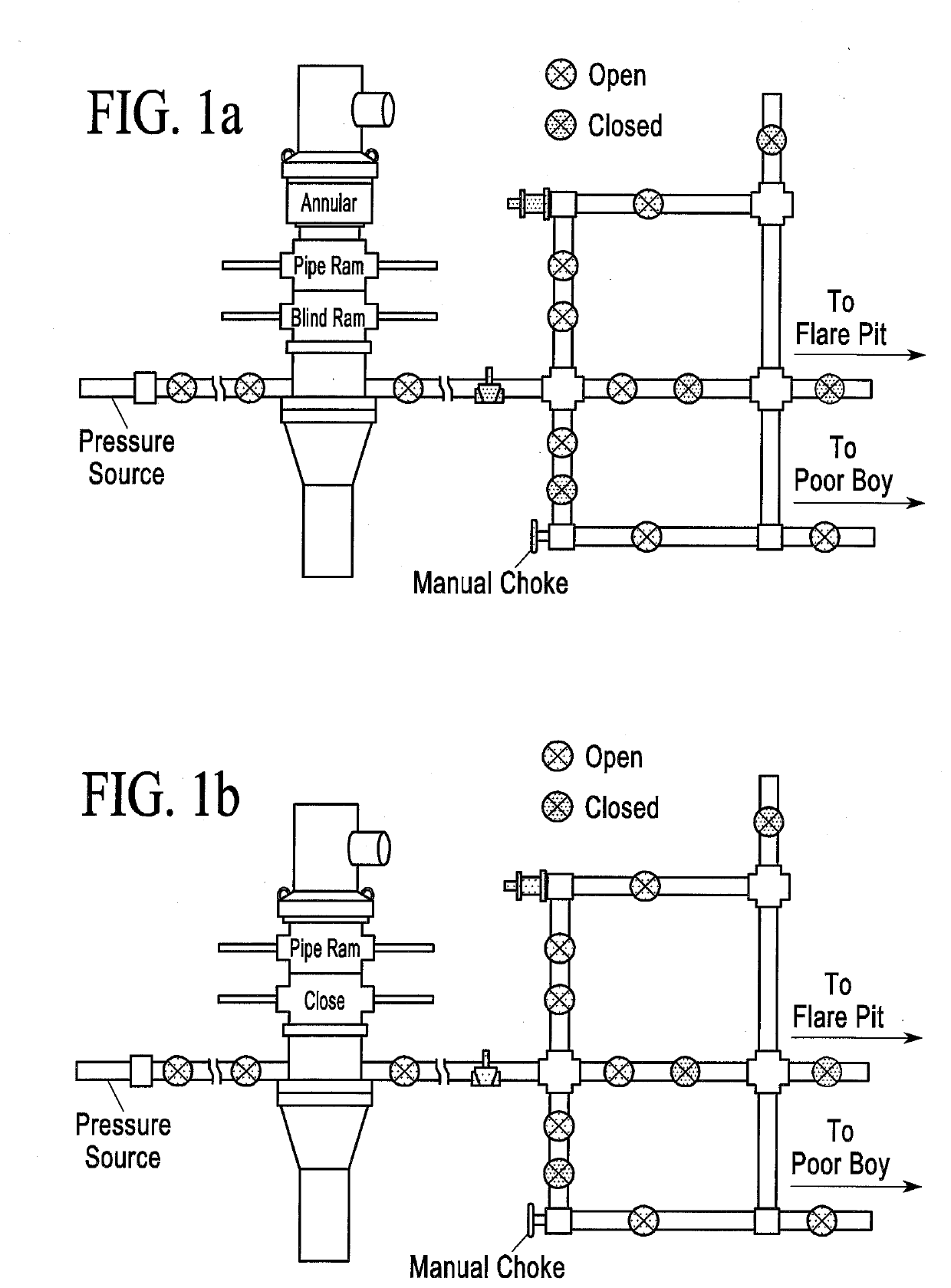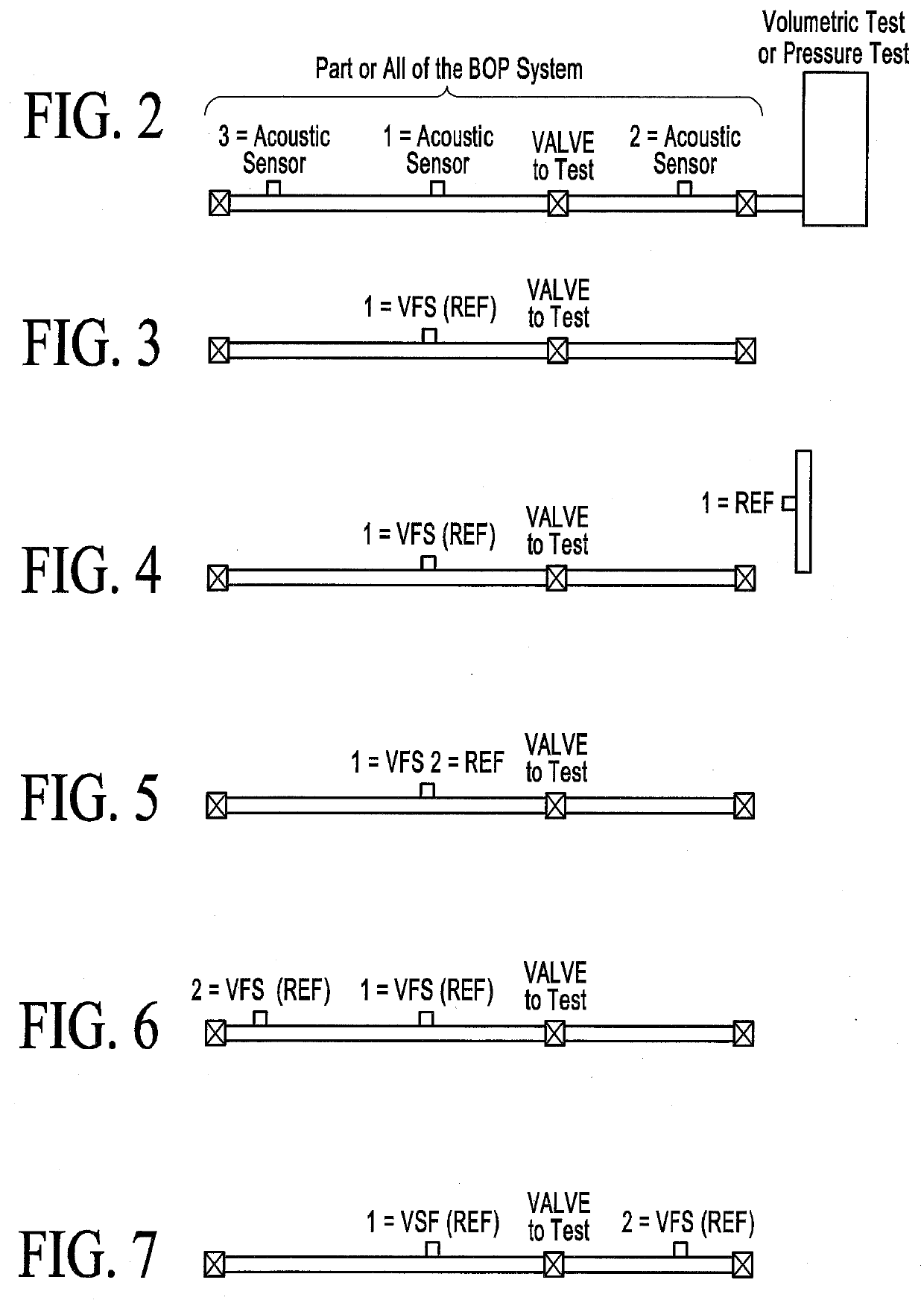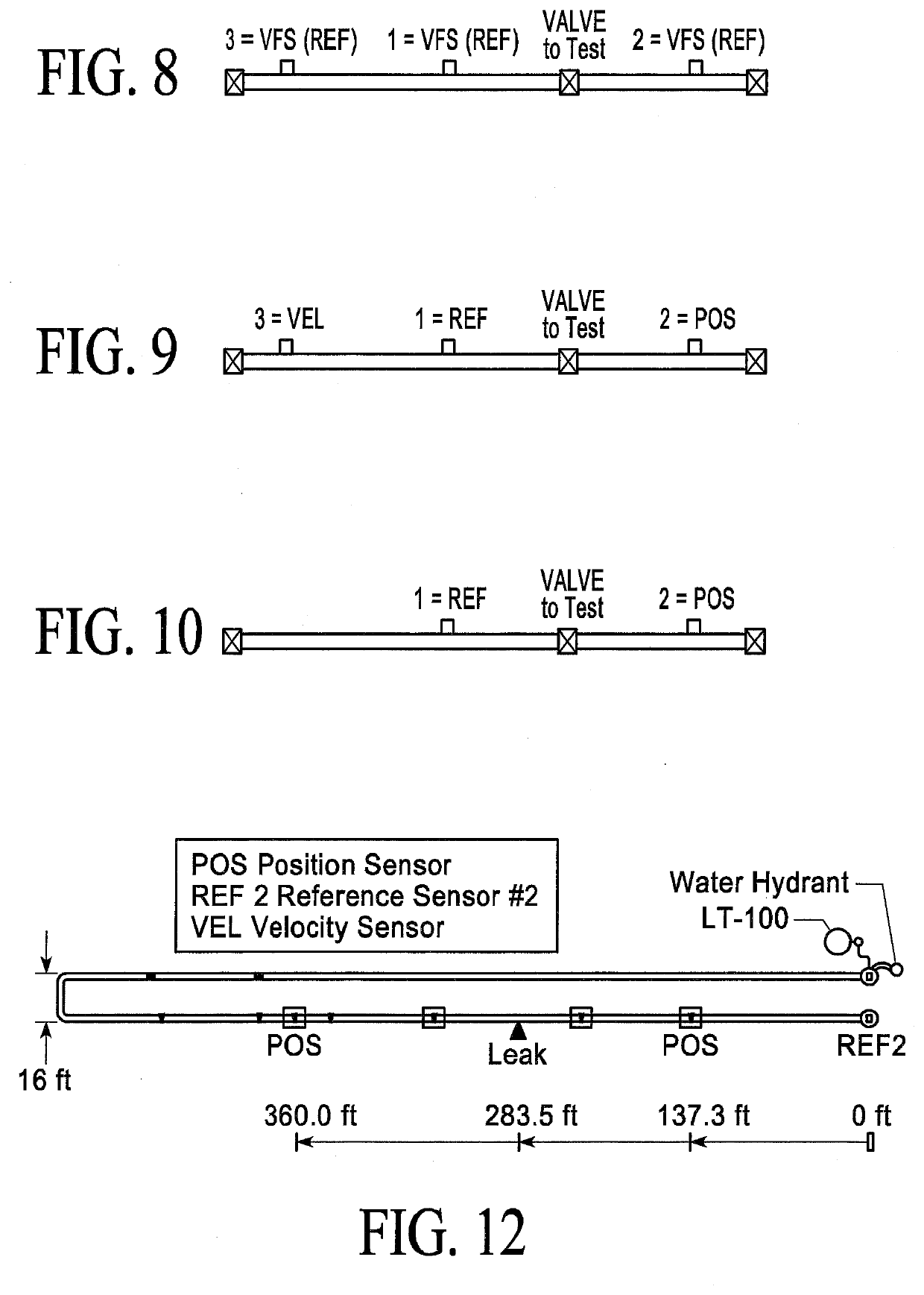Method and Apparatus for Testing the Blowout Preventer (BOP) on a Drilling Rig
a blowout preventer and drilling rig technology, applied in the field of methods and apparatuses for testing the blowout preventer (bop) piping system, can solve the problems of preventing the integrity test from being completed, incomplete sealing of the valve, and wasting time and money, so as to reduce the number of false alarms, and improve the signal-to-noise ratio of the two-valve acoustic system
- Summary
- Abstract
- Description
- Claims
- Application Information
AI Technical Summary
Benefits of technology
Problems solved by technology
Method used
Image
Examples
Embodiment Construction
[0101]The regulation Part 250—Oil And Gas and Sulphur Operations in the Outer Continental Shelf Subpart D—Oil and Gas Drilling Operations; § 250.447-§ 250.451) require that the BOP systems in the United States (Title 30: Mineral Resources, on a drilling rig for both onshore and offshore rigs be pressure tested according to Part 250, Subpart D, Sections 250.447-250.45. The pressure test is designed to insure that all parts of the BOP are operationally functional, i.e., pipes and flanges do not leak and valves seal completely when closed so that there is no flow across the valve.
[0102]To test the BOP for integrity safely and / or in accordance with BOP regulations, a pressure testing system, or its alternative, a constant-pressure, volumetric testing system needs to be performed at two pressures. For safety and efficiency, a test should be performed at a lower pressure (e.g., between 200 and 300 psig) to verify that the system passes before raising the pressure to higher pressures (e.g....
PUM
 Login to View More
Login to View More Abstract
Description
Claims
Application Information
 Login to View More
Login to View More - R&D
- Intellectual Property
- Life Sciences
- Materials
- Tech Scout
- Unparalleled Data Quality
- Higher Quality Content
- 60% Fewer Hallucinations
Browse by: Latest US Patents, China's latest patents, Technical Efficacy Thesaurus, Application Domain, Technology Topic, Popular Technical Reports.
© 2025 PatSnap. All rights reserved.Legal|Privacy policy|Modern Slavery Act Transparency Statement|Sitemap|About US| Contact US: help@patsnap.com



